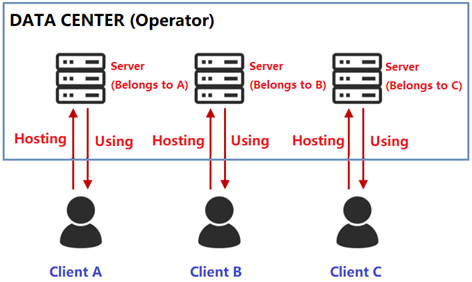
Internet Data Center, the English abbreviation is IDC.
The reason why it is not called "DC" directly is mainly to avoid confusion with direct current (Direct Current). Moreover, today‘s data centers are generally connected to the Internet and focus on Internet services, so it is more accurate to call them "IDC".
From a functional point of view, the data center is an oversized computer room with many servers dedicated to centralized management of data (storage, calculation, and exchange).
According to statistics from industry organizations, the global data traffic processed by data centers in 2020 reached 15.3ZB (1ZB≈1 billion TB), accounting for 99.35% of the global total traffic. In other words, almost all Internet data cannot be separated from the processing of data centers, which shows its importance.
According to popular sayings, data centers are important infrastructure like water plants and power plants. They are the driving force of the digital economy and the support base for national and social development.
1. Development stage of data center
Let’s first take a look at the development history of data centers.
In the 1960s, mankind was still in the mainframe era. At that time, in order to store computer systems, storage systems and power equipment, people built computer rooms and called them "server farms".
This "server farm" is considered the earliest prototype of the data center.
In the 1990s, with the birth and vigorous development of the Internet, many companies began to implement informatization. They built their own websites and also built a large number of email, FTP, OA office automation and other servers.
Some companies place servers in internal computer rooms. There are also some companies that don’t have many servers but are unwilling to put them in offices (noisy, prone to power outages, and low security), so they “host” them in the operator’s computer room and rent the operator’s space, electricity, and network bandwidth. , let the other party manage and maintain it on your behalf.

As a result, the concept of data center began to gradually take shape. 1996. An American company called Exodus (specialized in computer room facility construction and bandwidth services) first proposed the name "IDC".
This is the early stage of the development of IDC data centers.
In 1997, Apple launched a virtual machine software called "Virtual PC". Later, VMWare also launched the now-famous VMWare Workstation, marking the arrival of the virtual machine era and laying the foundation for the evolution of data centers.
As time went by, the first-generation data center hosting services began to become more refined, extending from complete server hosting to website hosting and virtual hosting services.
In other words, on a certain server, through virtual host software, N website hosts are virtualized and rented to N customers.
In addition to websites, diversified services such as data storage space rental have also emerged. This is the second stage of the IDC data center.

Later, at the beginning of the 21st century, companies such as Amazon and Google proposed cloud computing, which brought the data center into the third stage (cloud computing stage), which continues to this day.
The cloud computing stage is the second stage of upgrade and evolution. It uses virtualization technology and container technology to completely realize the pooling of data center server computing resources. All CPU, memory, hard disk and other resources are managed by more powerful virtualization software and then allocated to users.
It has evolved from physical hardware rental to virtual hardware rental, and even software platform rental and service rental. IaaS, PaaS, SaaS, just appear in front of us.
